Klan Ferris Wheel
Date updated: November 30, 2019 [Up]Material is free to copy, use, and modify.
Is this picture of the Ku Klux Klan riding a ferris wheel real?
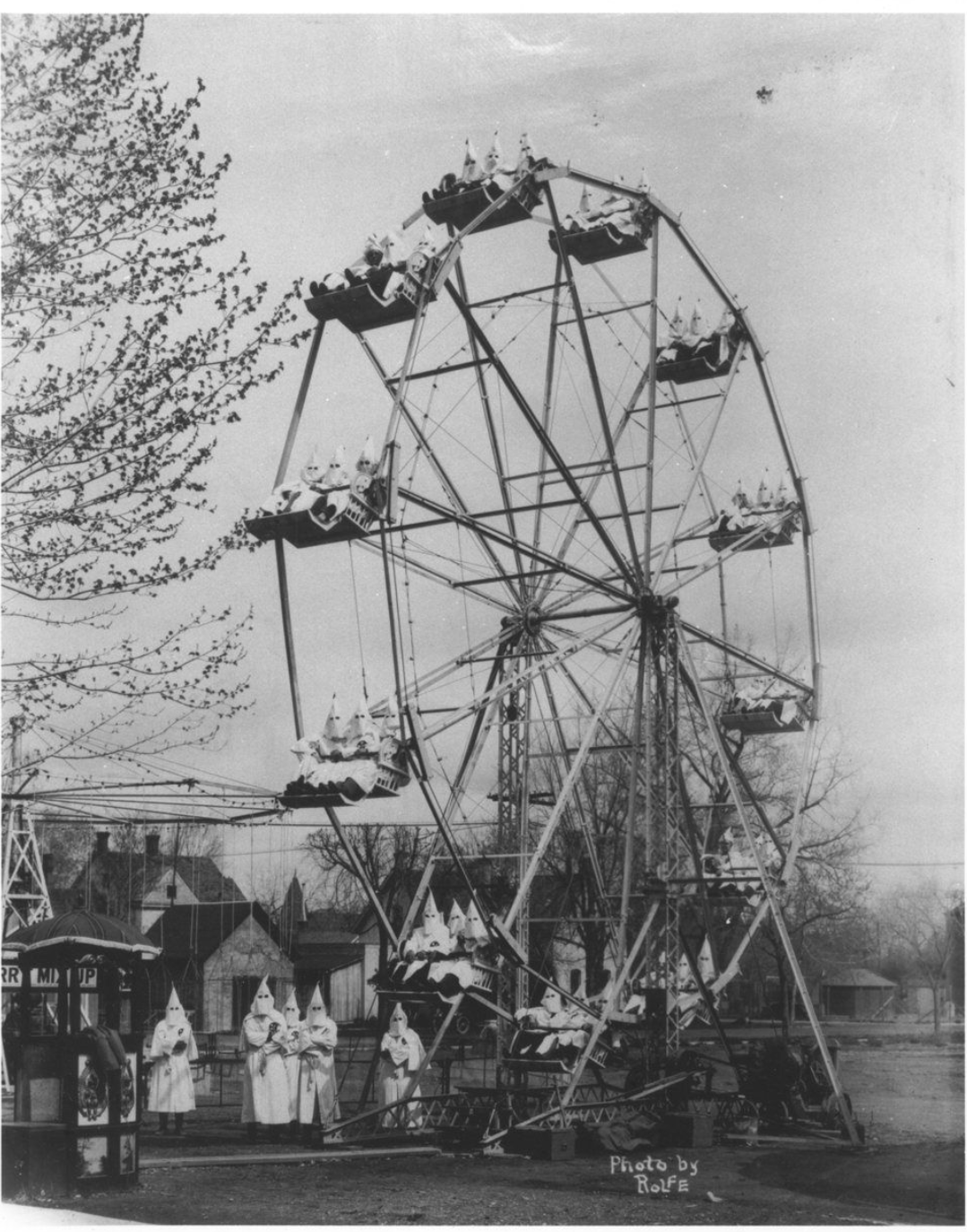
Old photo of KKK riding a Ferris wheel.
It's worth taking a minute to think about why this matters first. Why would this be interesting or shocking or surprising to us if true? What would it demonstrate?
What strikes me about the photo is the casualness of it. As a society, we are used to thinking of the Ku Klux Klan as a secretive organization, one that had to exist in hiding from their identity to prevent reprecussions.
If the Ku Klux Klan had days at the park, on the other hand, it indicates that there was very little fear involved -- that, as a matter of fact, they were broadly accepted by society at large.
OK, let's search it. Google image search is not the best image search, but good enough in most circumstances. We like that we can right-click search it, like below.
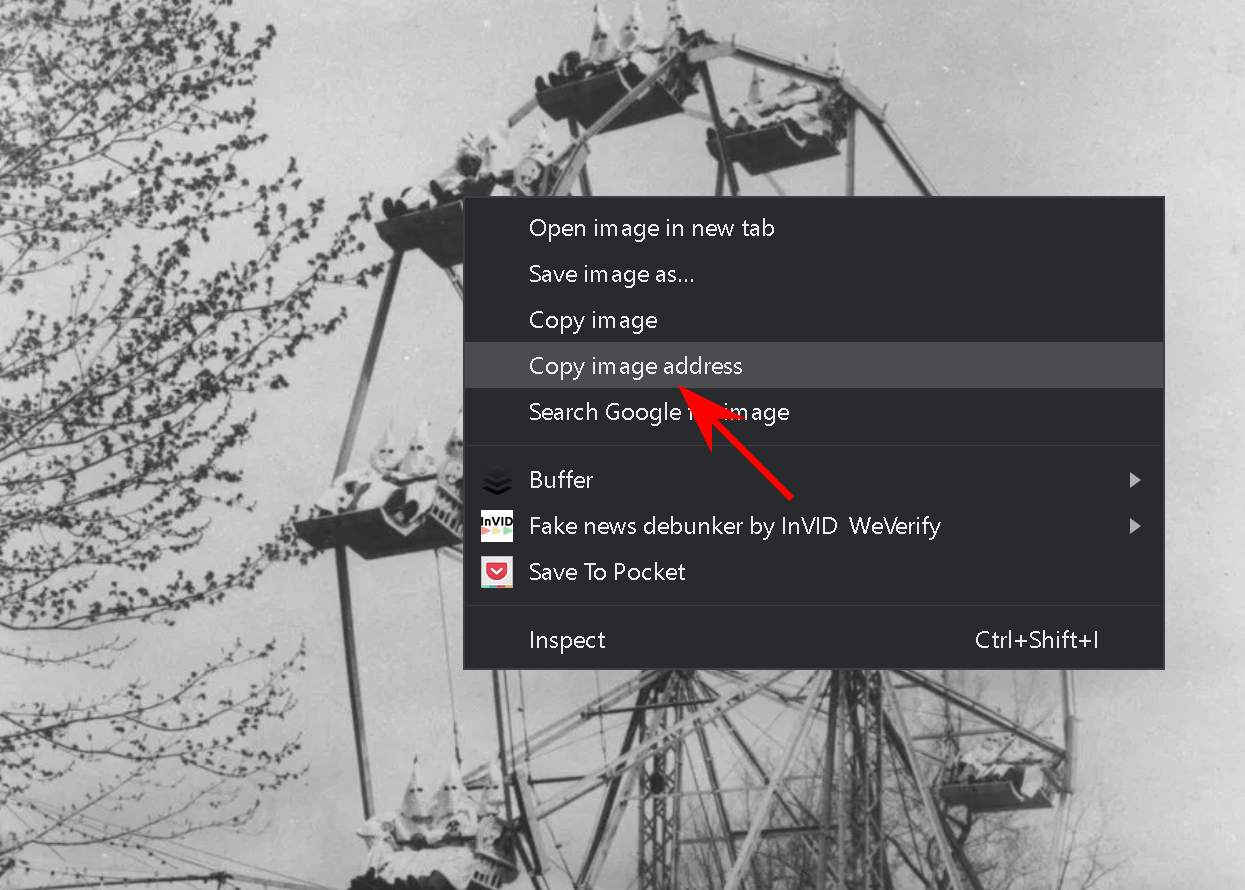
Right-click searching the image.
We scroll down to the pages that include matches. These are pages that have the photograph in them. We're hoping that the page will describe the photo. Let's click this Denver Post article.
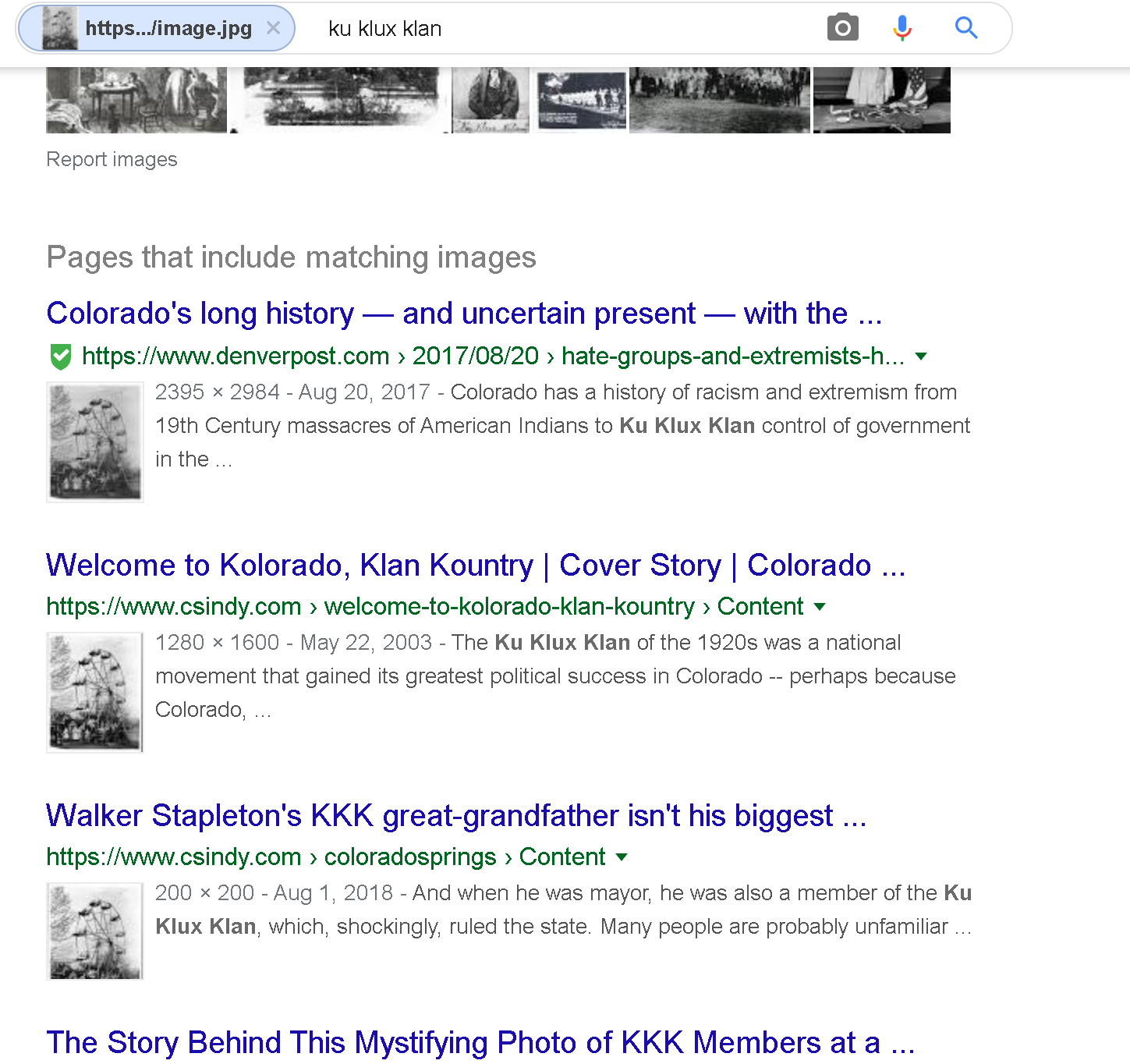
Lower section of Google Image SERP
We get to the Denver Post, and immediately we are going to scroll down.
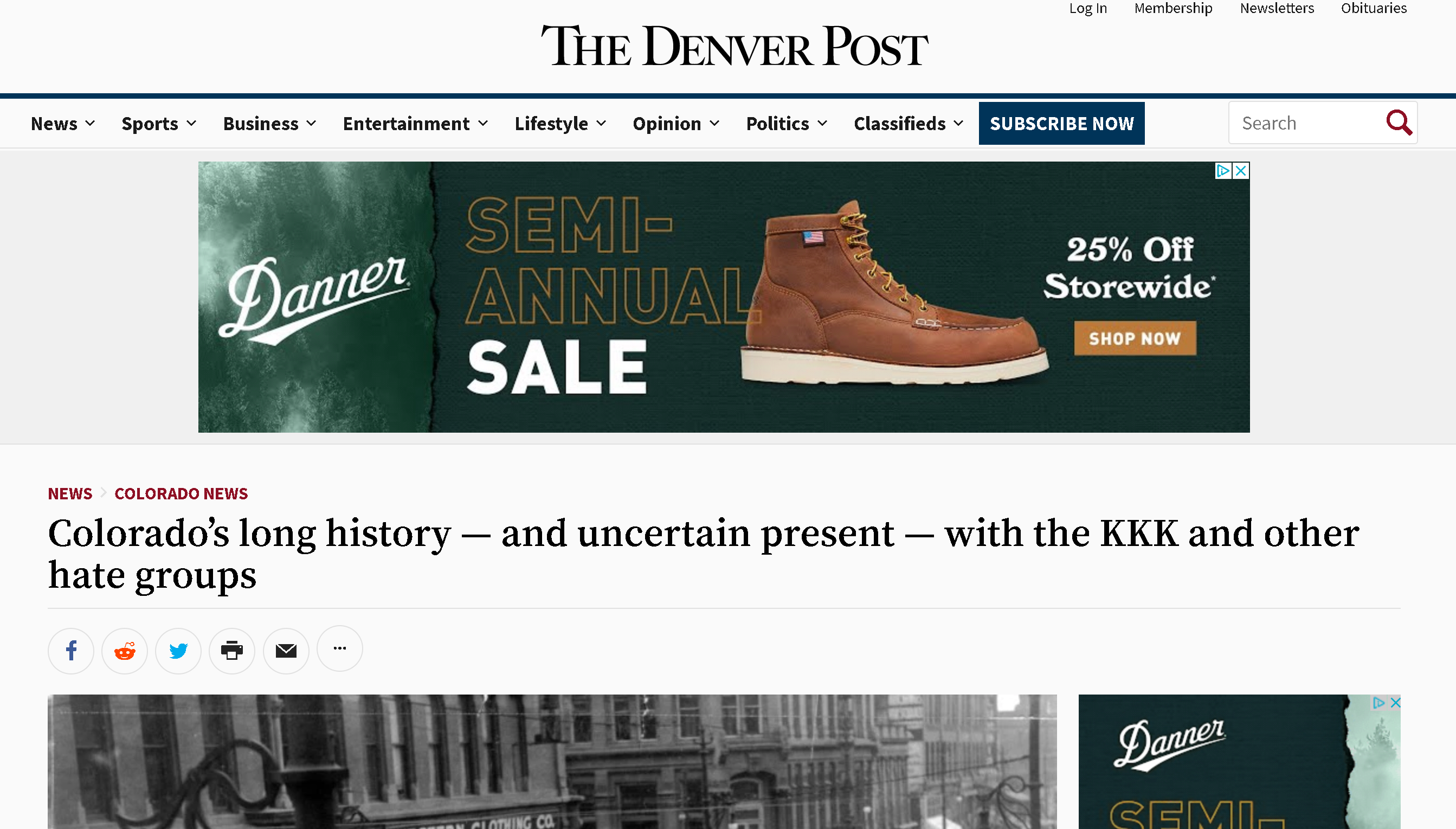
Denver Post page with headline "Colorado�s long history � and uncertain present � with the KKK and other hate groups"
The photo appears in a gallery, but it's captioned. And yep, it's the Ku Klux Klan at a park. More importantly, we've got important new information here: a time, a place, and a photographer (information we should always look for with a photograph)
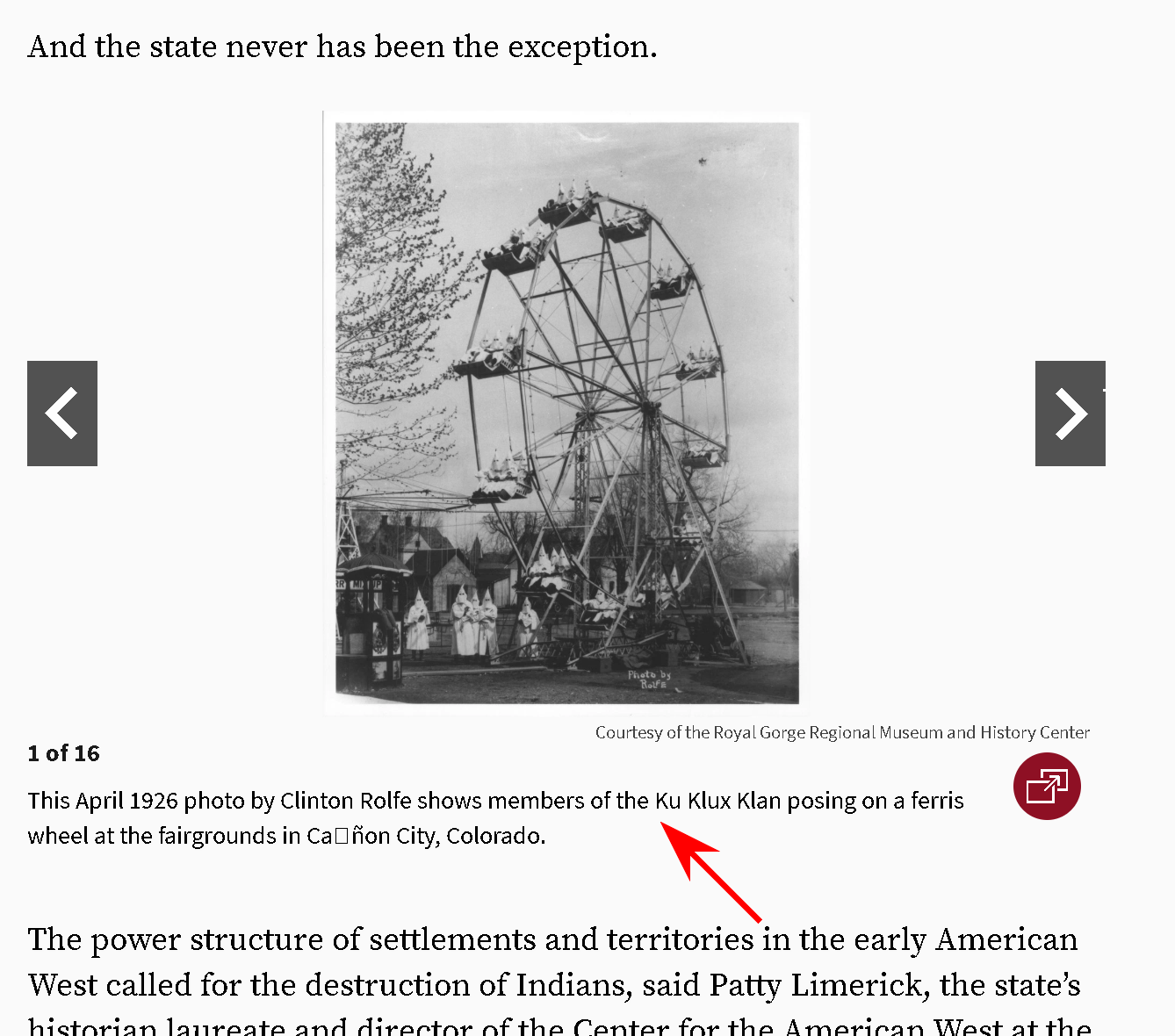
Gallery with a captioned version of the photo
We take the date and photographer (April 1926, Clinton Rolfe) and plug that back into Google search. This technique will surface articles that go into more detail about the photo.

A right-click search on [[April 1926 by Clinton Rolfe]] in the caption of the photo
You can see that we're now get a range of articles that seem to go into detail on this. Some of these might have been in the original results, but now we can see the details in the Keyword in Context (KWIC) blurbs. This Atlas Obscura one looks like it has the full story.
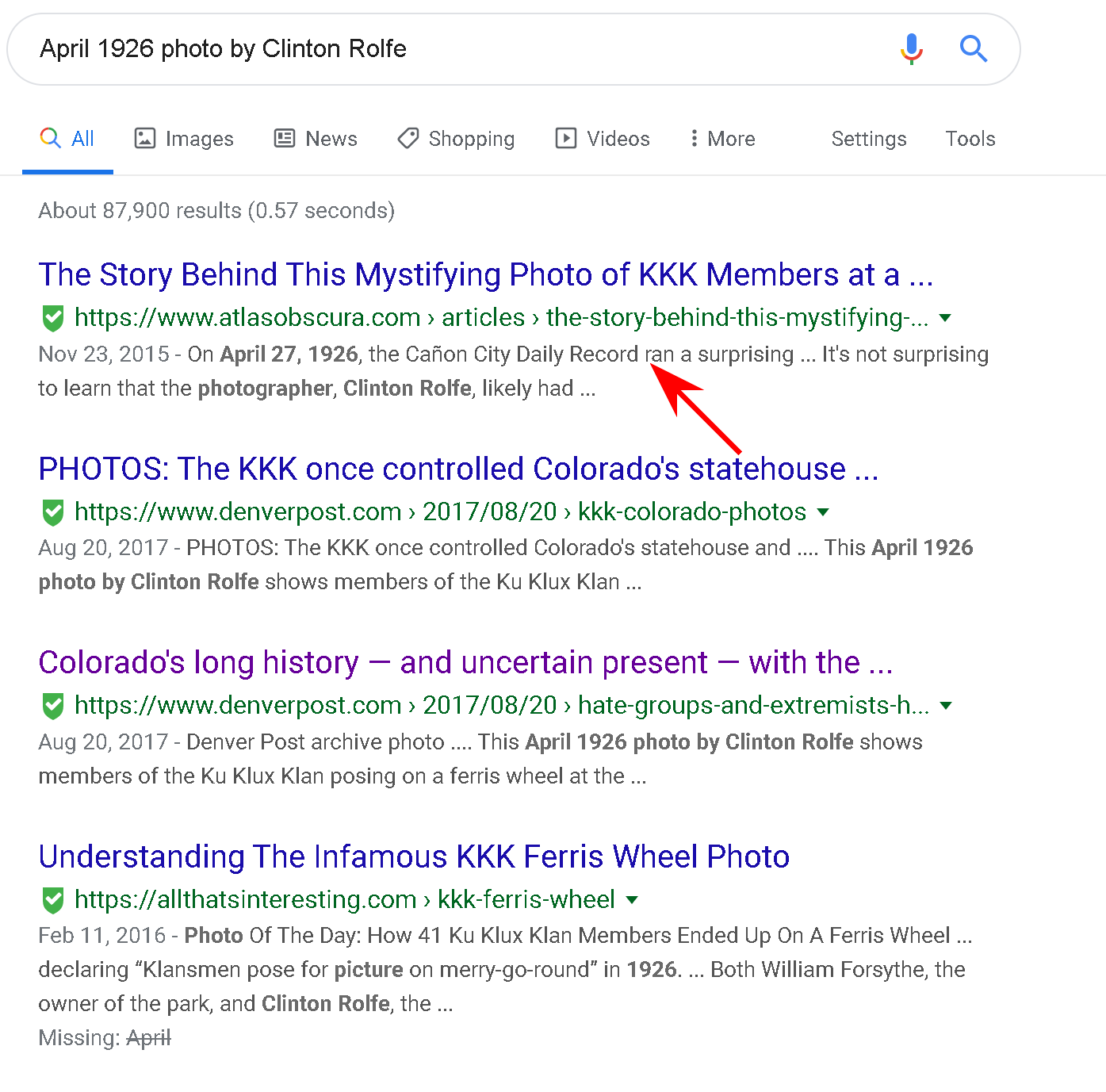
SERP for [[April 1926 photo by Clinton Rolfe]] with Atlas Obscura at the top.
The article goes into depth on the photo. Yes, it was real. It was taken by a newspaper reporter but never published. It resurfaced 65 later.
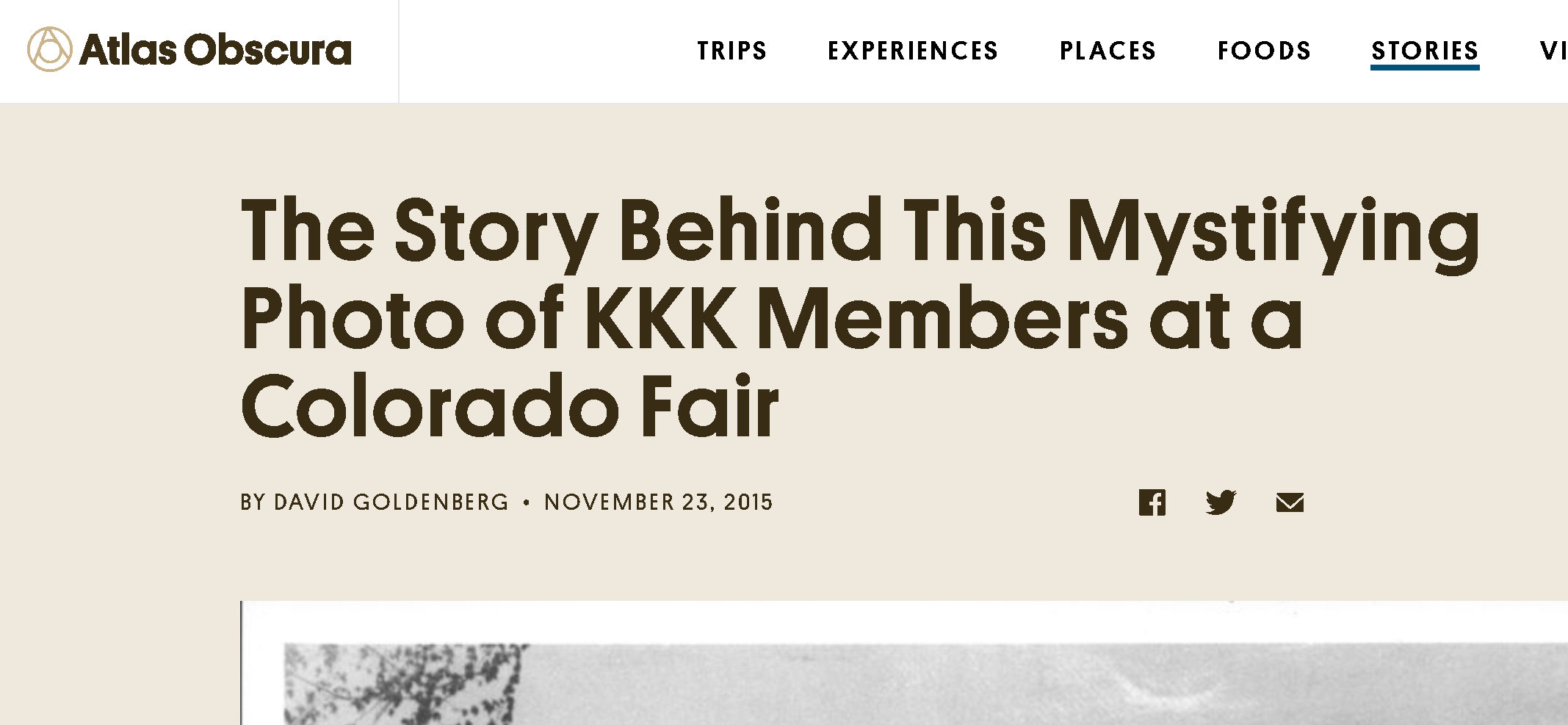
Article headline on Atlas Obscura
But you also learn some surprising things. In this case, for example, this particular hub of Klan activity was directed very much against immigrants and Catholics, which were making inroads in Colorado.
And so it was the construction of a local abbey near Ca�on City that got the Klan�s attention in the early 1920s.
The Catholic Church decided to fund construction of the Holy Cross Abbey after a large influx of immigrants arrived from Southern Europe after World War I, swelling its ranks. Local Protestants, on the other hand, were worried that the new arrivals were taking too many mining jobs and morally disrupting the town�s temperate culture. (The Klan of the 1920s strongly supported Prohibition. The Abbey, on the other hand, now doubles as a winery.) As a result, Arnold found it easy to recruit a large majority of the Protestants to the Klan, and soon installed Klansmen into every local political office, often under the slogan �100 percent Americanism�.
And of course the article shows how broad the infiltration of the Klan was into government and other positions of power in Colorado. The governor was a Klansman, the photographer here was Klan-connected. Kids in town wore KKK bibs (for Ku Klux Klan kids).
It's worth asking students to read
whatever deeper article they end up at and asking what
surprised them when they read it. What's the relevance to
today? And what does it tell us about the past? When we do
some basic checks on the viral material that reaches us, we
can often turn shallow presentations into deeper
understandings.